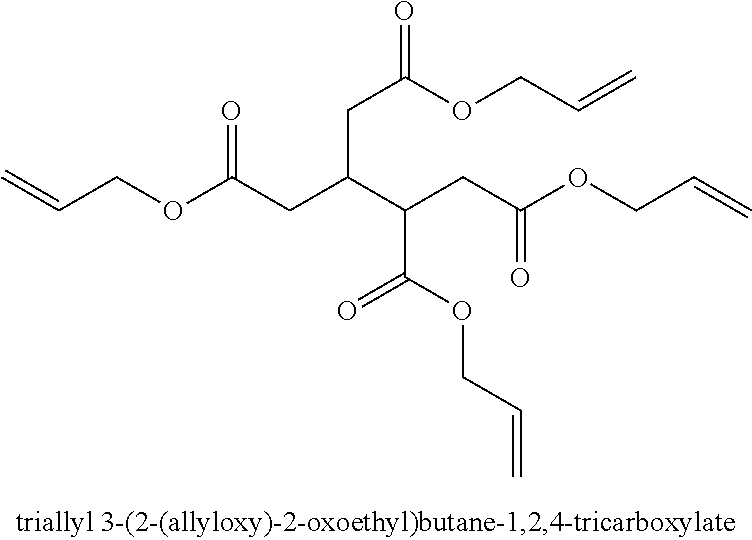Manufacture of an epoxyethyl carboxylate or glycidyl carboxylate
a technology of glycidyl carboxylate and epoxyethyl carboxylate, which is applied in the direction of physical/chemical process catalysts, metal/metal-oxide/metal-hydroxide catalysts, organic chemistry, etc., can solve the problem of even more difficult epoxidation of vinyl esters
- Summary
- Abstract
- Description
- Claims
- Application Information
AI Technical Summary
Benefits of technology
Problems solved by technology
Method used
Image
Examples
example 1
[0049]A comparative was run using the system described by De Vos et al. (Epoxidation of Terminal or Electron-deficient Olefins with H2O2, catalysed by Mn-trimethyltriazacyclonane Complexes in the presence of Oxalate Buffer”, Tetrahedron Letters 39 (1998) 3221-3224) for epoxidation of allyl acetate with hydrogen peroxide as the oxidant, with the exception that a maximum of 10% co-solvent (acetonitrile) in water was used. All the other concentrations were the same as described by the De Vos et al.
[0050]A solution of manganese sulphate monohydrate in water (0.1 mmol in 10 ml) and tmtacn in acetonitrile (0.15 mmol in 10 ml) were mixed and diluted with water (60 ml). An oxalic acid / oxalate buffer solution (0.15 mmol oxalic acid / 0.15 mmol oxalate in 10 ml water) was added and finally allyl acetate (6.7 g, 67 mmol) was added to the reaction mixture, which is maintained at 5° C. An excess of hydrogen peroxide is dosed (10 ml of a 35% aqueous solution) in 5 minutes and the reaction is stirre...
example 2
[0051]In the examples according to the invention a binuclear manganese complex (as shown in the beginning of the Experimental section) in an amount of 0.023 mmol was used in combination with an oxalate / oxalic acid buffer (4.14 mmol) in pure water (100 ml) as aqueous reaction medium. Oxidant used was 35% aqueous H2O2. The pH of the aqueous phase was stabilized at 3.6 by adding oxalic acid with a titrator and the temperature was maintained trough out the experiment at 5° C. The reaction was performed in a four necked glass reactor facilitated with a mechanical stirrer, cooling jacket and a bottom valve.
[0052]The experiments were carried out with the allyl esters allyl methacrylate and allyl 2-ethylbutanoate (which is made in line with the procedure set out in WO03024914) or the vinyl ester VeoVa™ 10 as starting material. The reaction was initiated with the addition of dilute H2O2 as oxidant. Dosing rate is 5 mL / h for 2 hours into the reaction mixture and stirring rate is 800 rpm. The ...
example 2a
[0053]The catalytic epoxidation of 40 grams of allyl methacrylate was carried out as described above. Conversion towards glycidyl ester is 64 mmol after 2 hours. Selectivity towards glycidyl ester is 88 mol % (of which 58% selectivity for mono-epoxide glycidyl ether) on total converted allyl ester. Turnover number towards epoxide is 2800.
PUM
| Property | Measurement | Unit |
|---|---|---|
| temperatures | aaaaa | aaaaa |
| temperatures | aaaaa | aaaaa |
| water-soluble | aaaaa | aaaaa |
Abstract
Description
Claims
Application Information
 Login to View More
Login to View More - R&D
- Intellectual Property
- Life Sciences
- Materials
- Tech Scout
- Unparalleled Data Quality
- Higher Quality Content
- 60% Fewer Hallucinations
Browse by: Latest US Patents, China's latest patents, Technical Efficacy Thesaurus, Application Domain, Technology Topic, Popular Technical Reports.
© 2025 PatSnap. All rights reserved.Legal|Privacy policy|Modern Slavery Act Transparency Statement|Sitemap|About US| Contact US: help@patsnap.com



